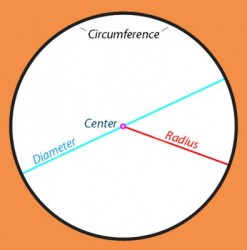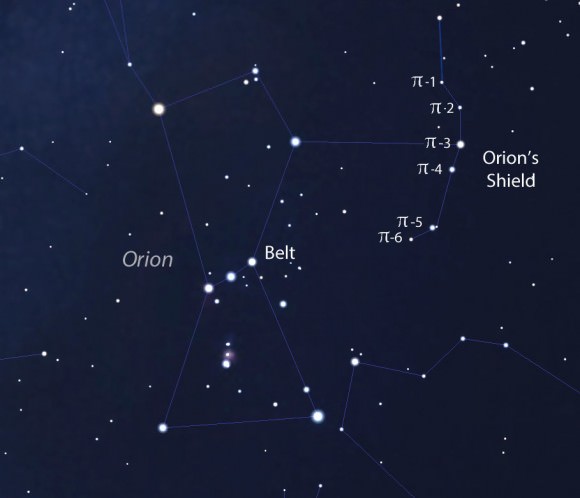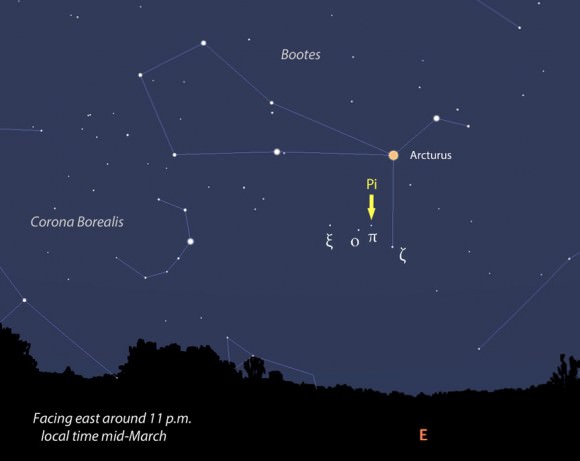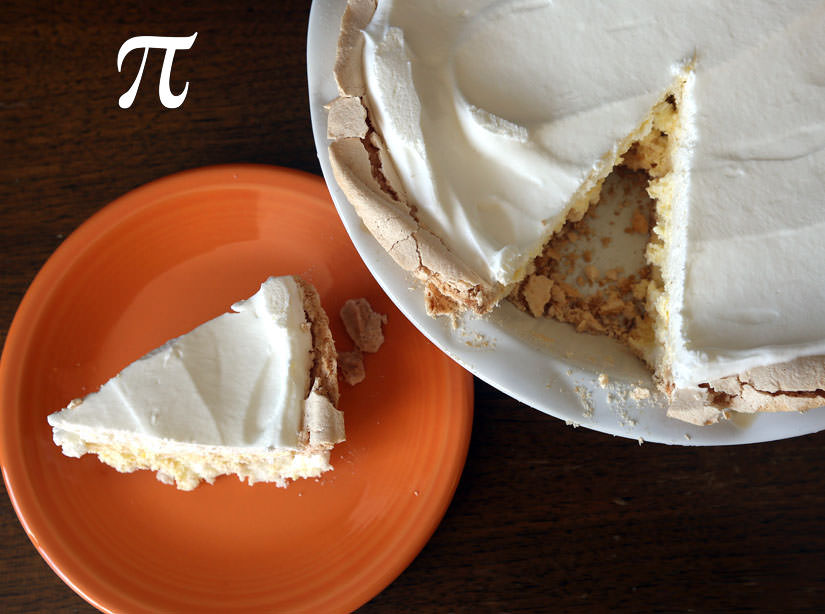Happy Pi Day! Pi is one of the few mathematical constants that immediately conjures up thoughts of food. Pies in particular. My wife Linda, inspired by this important day, prepared a lemon angel meringue pie I can’t wait to taste.

Exactly what is pi? It’s the ratio of the circumference of a circle to its diameter or the number you get when you divide the circumference of any circle by its diameter. It starts with 3.1415 and goes on forever in a never-repeating pattern. Mathematicians call it an infinite decimal. Unlike 3.57 or 7.5, which have a finite number of numbers after the decimal point, pi continues on into infinity. Divide C by D and you’ll never get to the end.
Not that math geeks with computers haven’t tried. By October 2011 two Japanese guys calculated 10 trillion digits of pi, a world record. Nice work, but still far from infinity.
Pi Day happens every March 14 because the calendar date 3/14 is the same as pi’s first three digits. But this year’s pi celebration is an exceptional one. When you add on the last two digits of the year you get 3.1415. As you might guess, this date alignment happens just once a century.
Let’s go further. When the clocks strikes 9:26:53 a.m. and 9:26:53 p.m. today we can add an additional five digits to make 3.141592653. If you find yourself in a bar or pub this evening, see if you can convince the crowd to celebrate the world of mathematics with a toast to the moment.

If you’re not out sipping suds but find yourself instead at the telescope, consider celebrating the special moment with a hefty helping of Orion’s “pi stars” and the very attractive double star Pi Bootis. After proper names, the brighter stars in the constellations are labeled with Greek letters, meaning most groups have a “pi star”.
Pi Bootis is a striking, close double star that looks like pair of headlights approaching from interstellar space. The brighter star is magnitude 5 with a mag. 5.8 companion star just 5.5 arc seconds due east. Even a small telescope will split this beauty so long as you use a magnification around 60x or higher.

Pi shows up in more places than your oven or neighborhood greasy spoon. Anything involving circles, spheres and ellipses feature pi front and center which is why astronomy and architecture require healthy servings of pi for sustenance. Galileo, Copernicus and Kepler used pi in their calculations of the sizes, distances from Earth, and orbits of the planets. It pops up in statistics, mechanics, cosmology and even in Einstein’s Theory of Relativity equations.
Coincidentally it’s also the wild-haired Einstein’s birthday today. Happy E=mc² Day, too!


Nice one about Einstein!
Also nice that Orion’s shield of ? stars forms a nice arc!
Only quibble I’d add is that we should be talking about abstract/perfect circles and their parts rather than any physical one to get the infinite regress of ?.
Hi Steven,
Thanks for your comment. And you’re right – they do form an arc that’s at least part of a circle.
o rats – the internet is eating my pi symbol…. lol